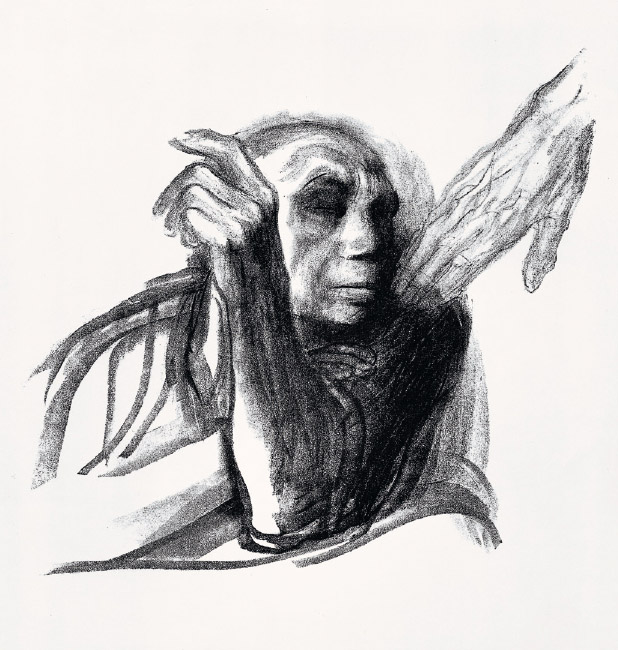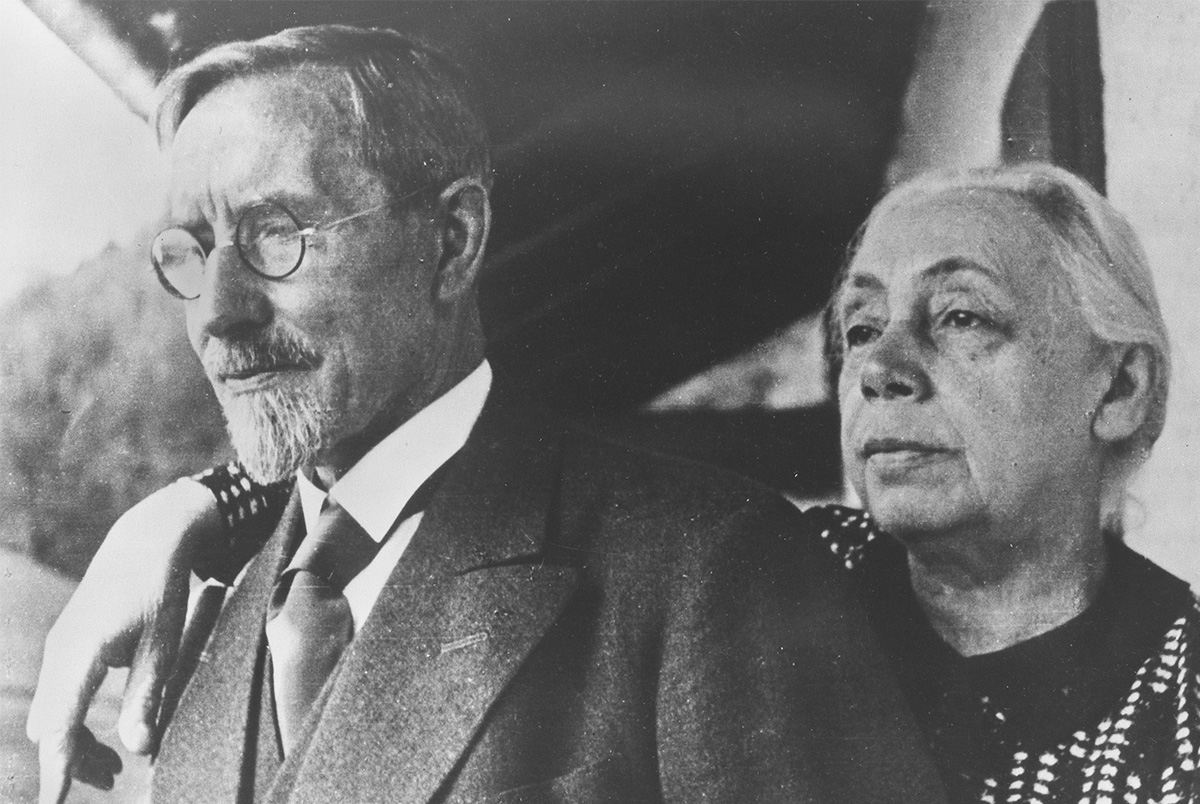
Käthe Kollwitz, Call of Death, sheet 8 of the series “Death”, 1937, lithography
Käthe Kollwitz died 80 years ago, on April 22, 1945.
Shortly before the end of the Second World War, Käthe Kollwitz died in Moritzburg near Dresden. She spent the last months of her life at the “Rüdenhof”, a manor house on the castle pond. The outbuilding of Moritzburg Castle offered her a safe haven from the never-ending war.
In her eventful life, Kollwitz had to experience the outbreak of two world wars and the Nazi era, with heavy personal losses: the First World War took her youngest son Peter, the Second World War her eldest grandson, who had been named after her uncle who died in 1914. The artist, who was committed to socio-political issues throughout her life, did not live to see Germany’s surrender on May 8, 1945.
In the turmoil of the last days of the war, news of the death of the famous artist only reached the public in July 1945. Käthe Kollwitz was initially buried in Moritzburg, but in late 1945, in accordance with her wishes, she was transferred to the family grave in Berlin’s Friedrichsfelde cemetery, where her husband Karl and her brother Konrad Schmidt were already buried.
Words from a dark time – A letter from 1940
A letter she wrote to her friend Mathilde (known as Thildi) Rüstow in 1940 provides a touching insight into the last years of her life. By this time, her husband Karl Kollwitz, to whom she had been married for almost 50 years, had already died. In the letter, she describes Christmas during the war, her worries, but also her hope to continue with her art – despite everything:
“Christmas 1940 […] The air raids are no longer so frequent, but serious enough. A lot of children were taken away, including our little Arne. […] I am fortunate to have been given a new task by the widow of Prof. Kurt Breysig. She wants me to do a work for her husband’s gravestone and I have agreed […] When the holidays are over, I want to get to work. […] If Berlin is really as badly hit by the new American airplanes as London is now, then I can do it. planes like London now, then I can’t vouch for my nerves, then I’ll probably flee. I had promised my old friend Mrs. Bonus in Bischofstein that I would then flee to her. […]
It just works. Easier days come and harder days come. You know it yourselves. I’m sending you a little picture, which I hope you don’t have yet, that Hans took of Karl and me in Karlstein near Reichenhall in ’35. I love it so much of Karl.” (AdK, Kollwitz Archive 349)
Her legacy lives on
Her work still moves millions today. Her depictions of grief, motherly love, poverty and resistance are timeless – impressive testimonies to an artist who could not look away and would not remain silent. 80 years after her death, Käthe Kollwitz remains a quiet but powerful voice for compassion and humanity in dark times.

